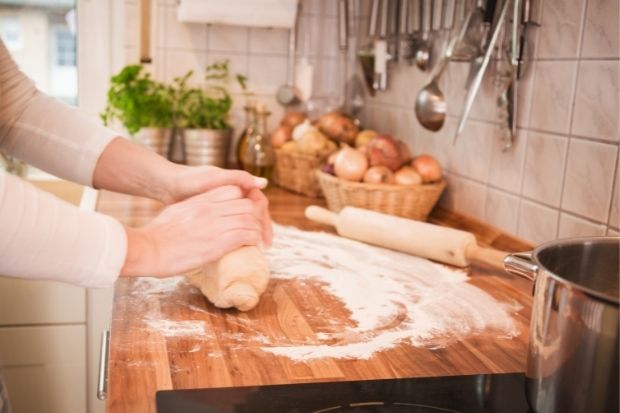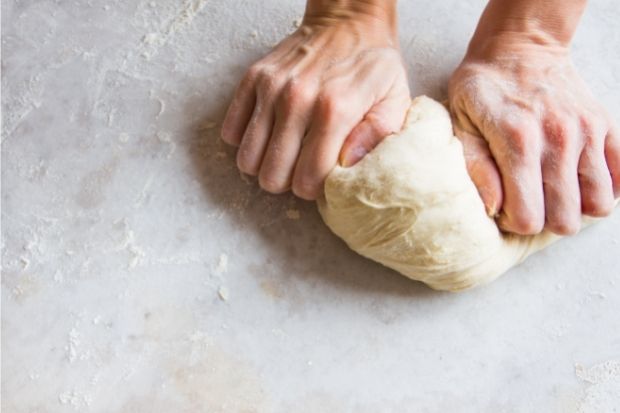If you love making homemade bread or pizza, you already know how important the kneading process is. After all, if your bread dough isn’t kneaded well enough, it can affect both the taste and the texture of the final product. If your goal is to get the perfect bread in the end, you might be wondering about the best surface for kneading dough.
Any surface that is smooth and large enough to work with can be used to knead dough. In other words, you don’t need any special surface or equipment to properly knead your dough.
Will Any Surface Do?

For the most part, kneading bread or pastry dough can be done on any smooth, large surface. This means that if you have granite countertops in your home or even just a plain wood board, you can still knead your dough successfully.
The first thing you’ll want to do is make sure the surface is clean and lightly floured, and place a tiny bit of flour in your hands as well. If the dough becomes sticky at any point during the process, simply add a small amount of flour so that your hands and the dough stay nice and dry.
The smoother the surface material is, the easier it will be for you to knead your dough. And the cleaner it is before you get started, the better the dough will turn out in the end. If you make homemade bread on a regular basis, you might want to consider having a special space set aside just to knead your dough. The sense of familiarity will help you knead a little better.
Why Is Kneading So Important?
When you knead your dough, the yeast is distributed and activated evenly and the proteins are able to develop into gluten. This in turn makes it easier for the dough to expand and stretch properly.

To put it simply, if you don’t knead the dough properly, the bread turns out dense and heavy instead of light and tasty. This also means you have to knead the dough long enough so it is smooth and elastic. For most people, this requires 20-25 minutes’ worth of kneading.
The best way to start the kneading process is to use the heel of your hand and push the dough away from you. You don’t have to use so much force that it’s uncomfortable. The more you knead the dough, the easier it gets. Kneading the dough for long enough warms and stretches the gluten, making the dough itself easier to work with.
Eventually, you’ll want to fold the dough over toward yourself, then start kneading again with the heel of your hand. Keep folding, kneading, and changing the direction of the dough to get the results you desire.
Things That Affect Your Kneading Time
The amount of time it takes for you to knead your dough properly depends on numerous factors, including the type of flour you use, the humidity level, the temperature, and the recipe itself. The kneading time is also affected by the surface area where you do your kneading, but you won’t need a special bread kneading board just to get it right.
Remember, the ideal surface for bread dough kneading simply has to be clean, large, and as smooth as possible. So even if you use something made out of stainless steel or metal, you can knead successfully without any worry.
